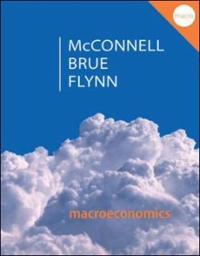Hello tutors. I am stuck with these questions.
Write down an expression for the gross future loss random variable at issue for a deferred life annuity with a deferred period of n years. Premiums of amount G are paid annually in advance for a maximum of n years, the annuity benefit of B is paid for life annually in advance starting in n years' time, and no benefit is paid if the life does not survive to time n. Assume that there are regular expenses payable annually in advance during the premium payment term of e, additional initial expenses of / at the start of Year 1, and regular benefit payment expenses of e' payable annually in advance while the benefit is being paid. Show how you would modify the premium equation below to allow for the expenses indicated: PO= SA (i) initial expenses of 2% of the sum assured (ii) renewal expenses of 2% of each premium, including the first (iii) claim expenses of 2% of the sum assured (iv) initial expenses of 50% of first premium plus renewal expenses of 3% of each premium excluding the first. 3 A life office sells 5-year term assurance policies to lives aged 60. Each policy has a sum assured of f10,000 payable at the end of the year of death. Premiums of $200 are payable annually in advance throughout the 5-year term or until earlier death. Let & denote the present value of the insurer's loss on one of these policies, at policy outset, ignoring expenses. Write down an expression for L. [2] (W) Assuming AM92 Ultimate mortality and 5%% po interest, calculate the expected value and standard deviation of L. [9] [Total 11] Calculate the annual premium payable in advance by a life now aged exactly 32, in respect of a deferred annuity payable from age 60 for 5 years certain and for life thereafter. The amount of the annuity is 400 pa, payable annually in arrear, and the insurer incurs an additional administration cost of 2 when each annuity payment is made. The premium is paid throughout the deferred period or until the earlier death of the policyholder. Basis: AM92 Ultimate mortality, 6% po interest.5 An insurer issues a combined term assurance and annuity contract to a life aged 35. Level tyle premiums are payable monthly in advance for a maximum of 30 years. On death before age 65 a benefit is paid immediately. The benefit is $200,000 on death in the first year of the contract, $195,000 on death in the second year, $190,000 on death in the third year, etc, with the benefit decreasing by $5,000 each year until age 65. No benefit is payable on death after age 65. On attaining age 65 the life receives a whole life annuity of $10,000 pa payable monthly in arrears. Calculate the monthly premium using the following basis: Mortality: up to age 65: AM92 Select over age 65: PFA92C20 Interest: 4% pa Expenses: Initial: E350 Regular: Assumed incurred annually at the start of each year during the deferred period, equal to 45 in the first year, inflating at the rate of 4% pa Claim: 0.5% of each annuity payment [12] 6 A life insurance company sells term assurance policies with a term of 2 years, with level premiums paid annually in advance, to male lives aged 60 exact at policy commencement. Each policy has a sum assured of f50,000, which is payable at the end of the year of death. The company prices the product assuming AM92 Ultimate mortality. The premium is calculated from an equation of value, in which the expected present value of the premiums is set to equal the expected present value of the benefit payments plus 10% of the standard deviation of the present value of the benefit payments. Calculate the premium assuming 4% po interest. Ignore expenses. An annual premium conventional with-profits 20-year endowment assurance policy, issued to a life aged exactly 40 has a basic sum assured of $10,000 payable at the end of the year of death. Premiums are calculated assuming AM92 Select mortality, 4% pa interest, initial expenses of $150 and claim-related expenses of 3% of the basic sum assured (payable at the end of the year of death or on maturity). (1) Calculate the premium if the policy is assumed to provide simple bonuses of 2% of the sum assured vesting at the end of each policy year (ie the basic benefit amount will be increased by E200 at the end of each policy year for future claims). [6] (ii) Calculate the premium if the policy is assumed to provide compound bonuses of 4% pa of the sum assured vesting at the end of each policy year (ie the basic benefit amount will be increased by a factor of 1.04 at the end of each policy year for future claims). [5] [Total 11]








